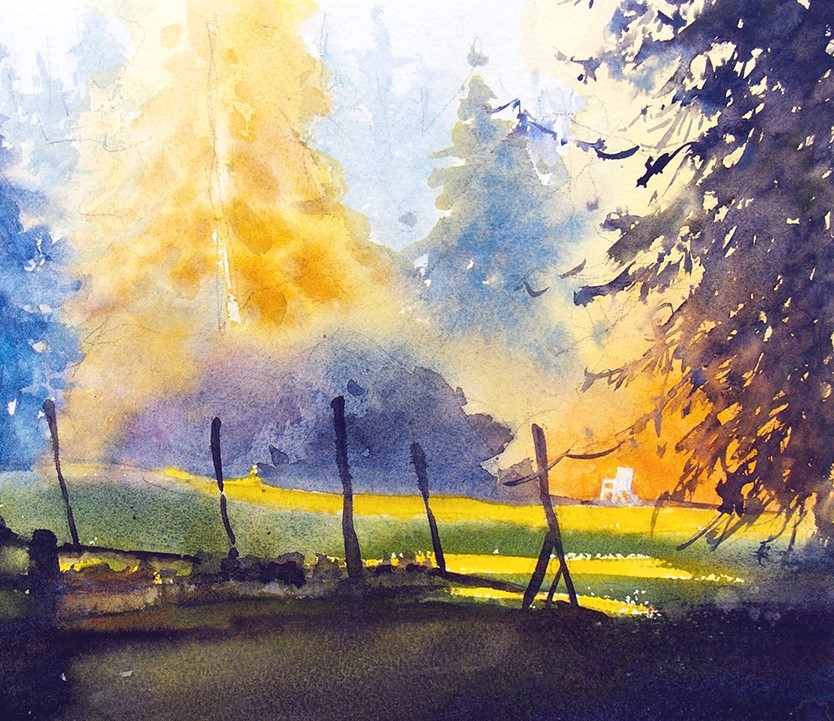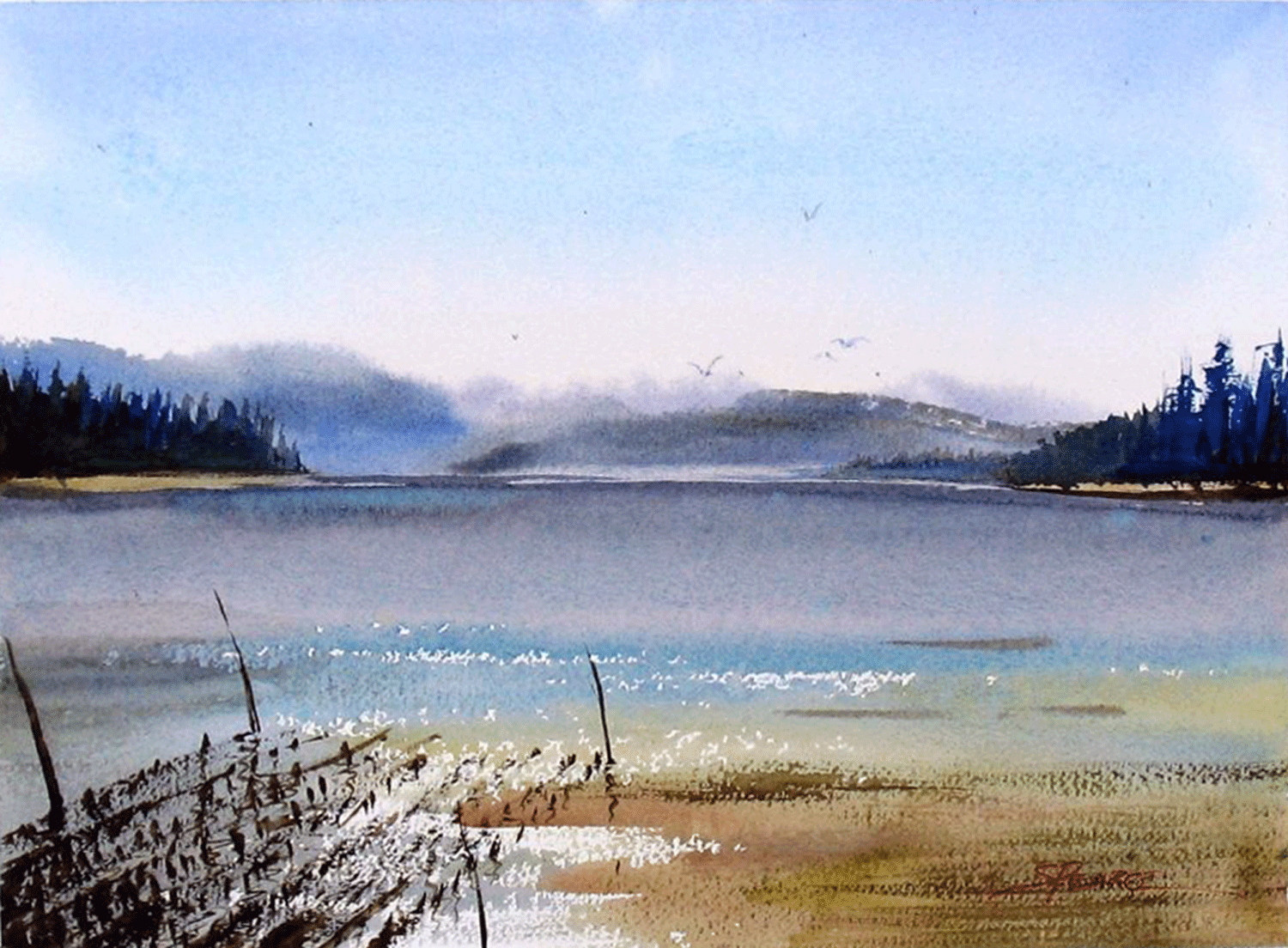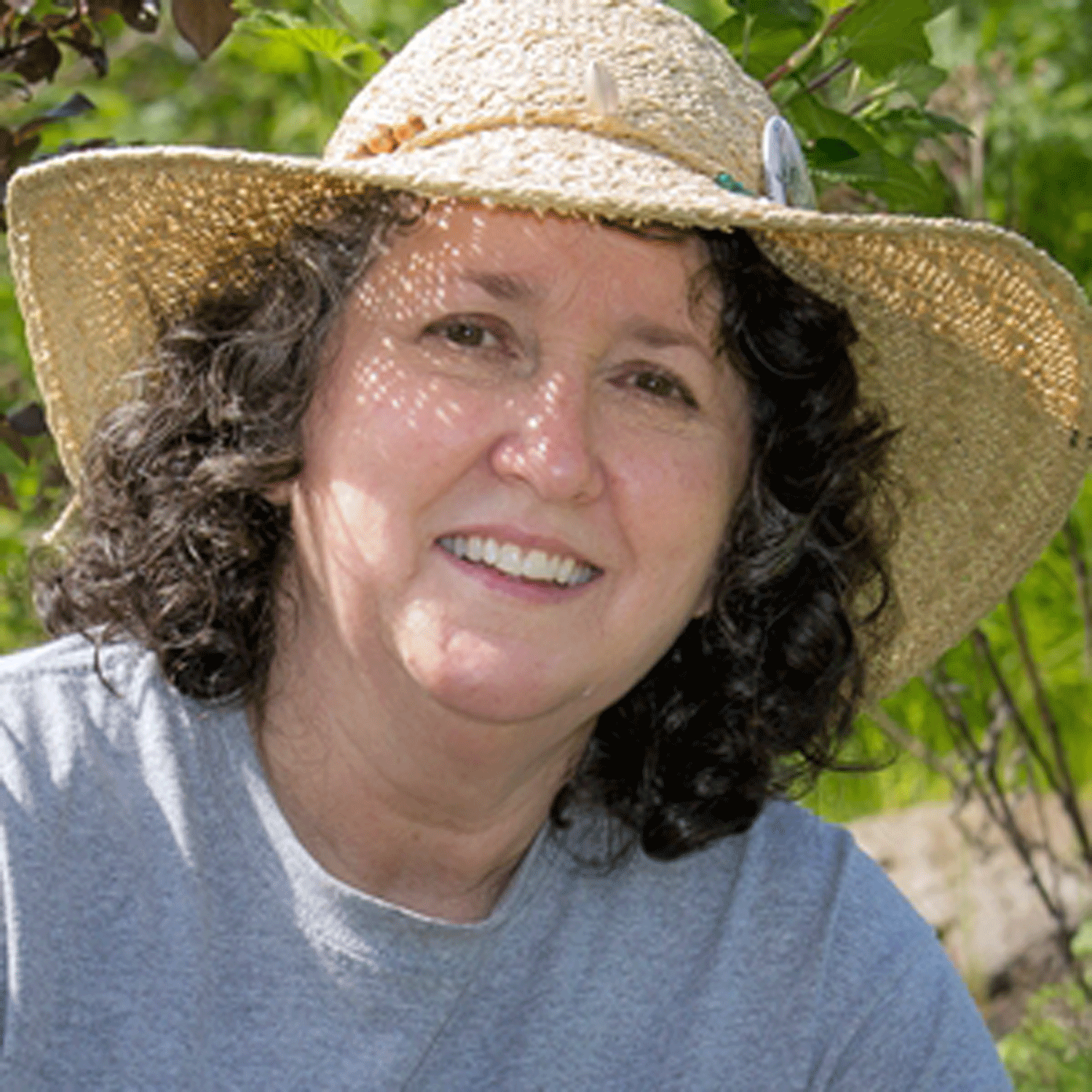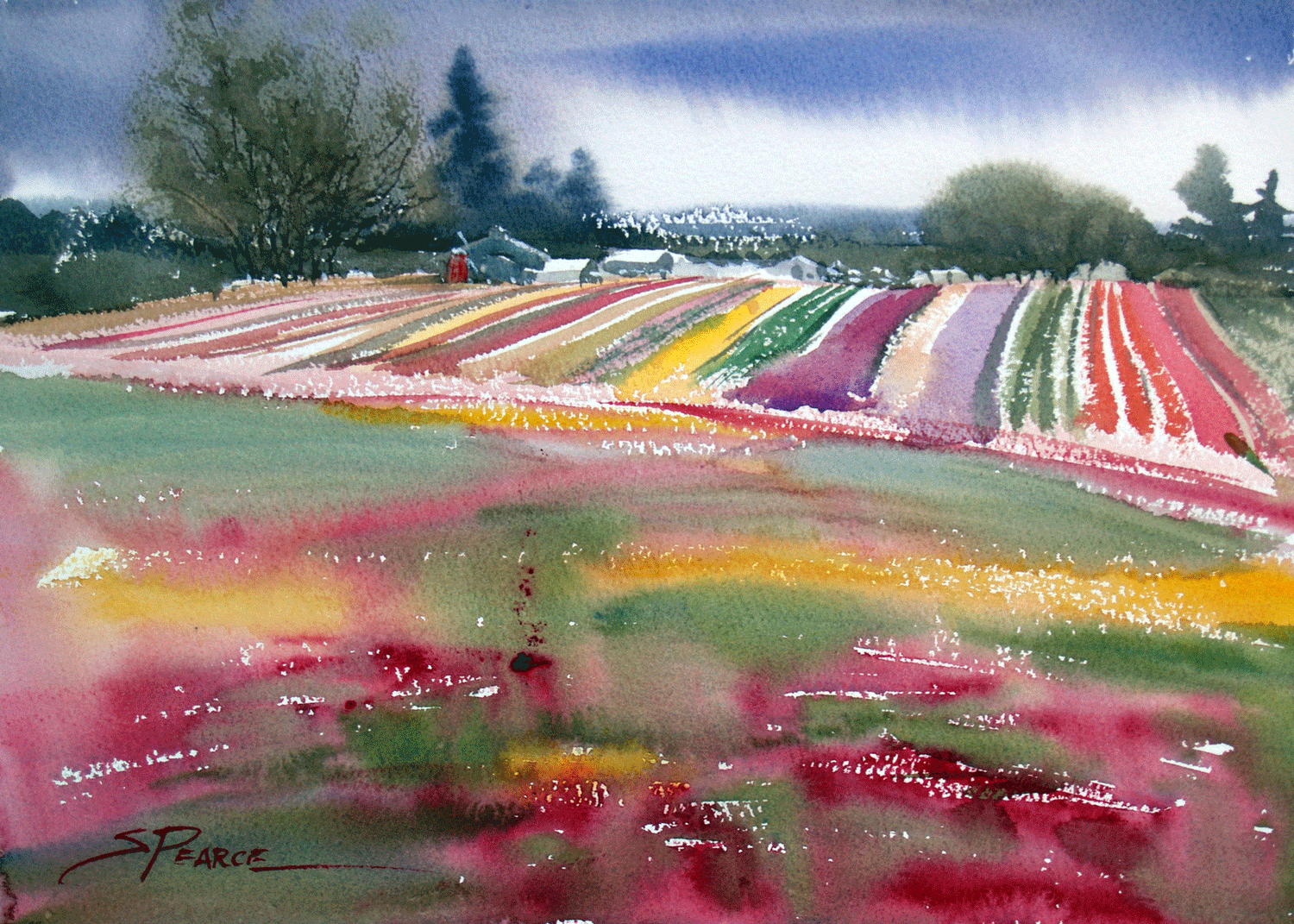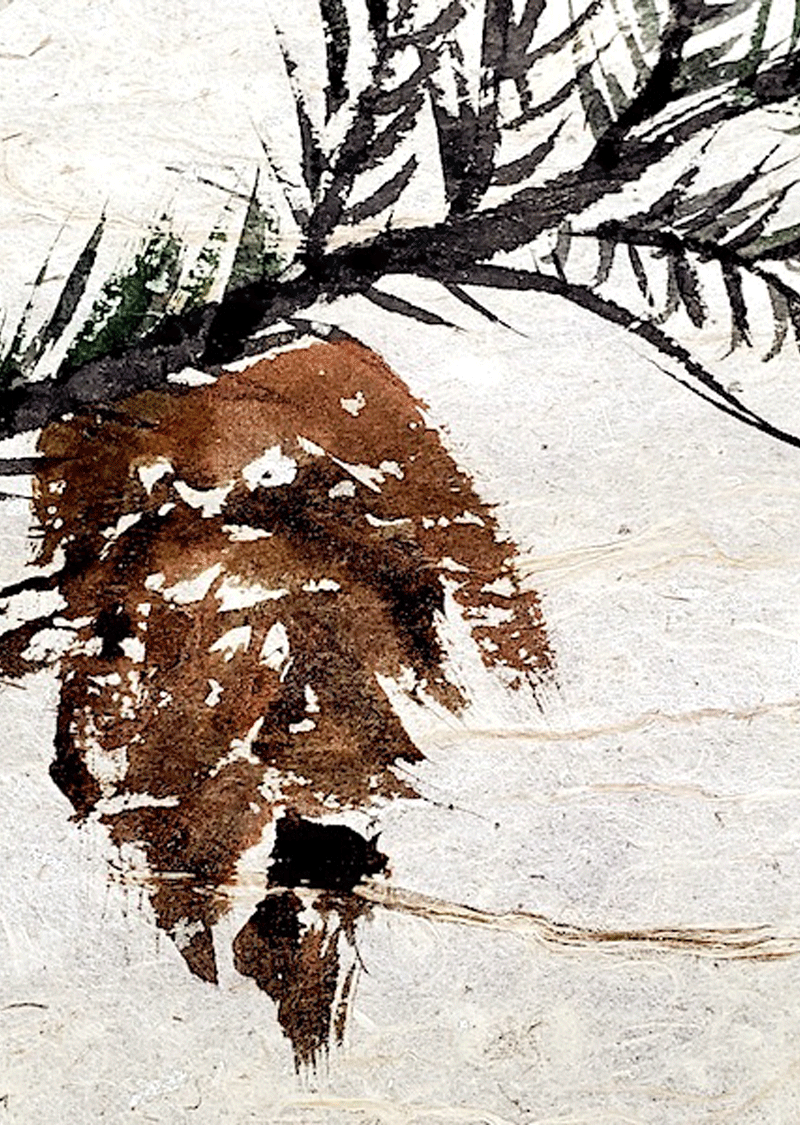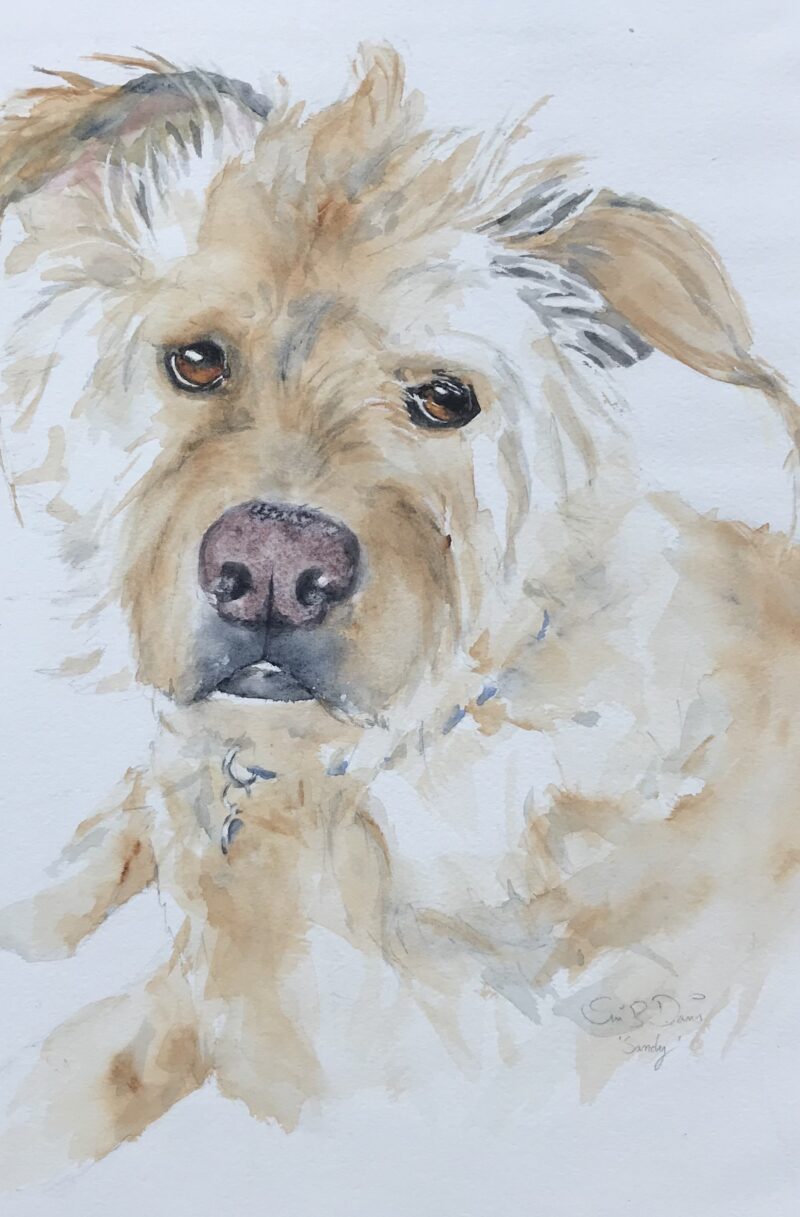Description
Watercolor: A Step Up
November 3rd, 10th, 17th
Time: 10am – 2pm
Instructor: Sandra Pearce
Join us, no matter your skill level, to improve your watercolor paintings and learn new skills. In this class, you will learn to manage the moisture levels of your paper and paint, which is crucial to successful watercolor painting. A key focus will be on understanding and executing “lost and found” edges. We will also cover value versus color. Whether you’re painting landscapes, architecture, still life, or portraits, these core techniques are essential to leveling up your skills. Students will have ample opportunity to practice and apply these concepts and to receive instructor feedback.
You can choose to bring your own simple photo references to work from – images that personally inspire you – or you can choose to work from instructor-supplied photos. ARTIST BIO Originally from England, Sandra Pearce emigrated to the US with her family. As an adult, she first studied English watercolor masters, followed by in-person study with many great watercolorists of our time. With over three decades of painting, Sandra still loves to learn and to share her experience, helping others along their path to watercolor success. See her work at
https://www.sandrapearce.com/
Instagram @sandrapearceartist
SUPPLY LIST Suggestions
Note to all: Do not go for cheaper supplies, if necessary, just get less. Cheaper paper, paints and inferior brushes will greatly impede your progress, or you will feel defeated — it’s NOT YOU, it’s your supplies. In painting, student grade supplies will give you poor results, while artist quality supplies will put you ahead of the learning curve.
PAPER Watercolor paper: Arches 140lb Rough or Cold Press, 2 sheets 22 x 30 (cut or tear in quarters) Handle with care like a Faberge egg.
Bruised paper will make dark marks in your painting. Wash Hands before handling. (Do not be talked into a cheap/student paper)
SURFACE Gator board, cardboard, or any board to support the paper while painting (It will bet set up at a slight angle)
BRUSHES the best you can afford. Natural hair work best for watercolor, or find the softest synthetics. Larger is better no less than size 8 round that comes to a point when wet. A medium size Mop brush for large washes (sky) will change your life as a painter! Maybe a Hake (HA-kay) too. A liner or rigger would be nice, but not necessary.
PAINTS TUBE Paints: a professional grade, not student grade. Student paints have lots of filler and colors are not as bright (Winsor Newton Cotman is student grade.) Hard pan paints do not supply enough immediate color and can wear down your brush.
Have at least 3 *colors: red, yellow, blue
Or get 2 reds, 2 yellows, 2 blues from the list below
*Ultramarine Blue (or UB Deep)
Cobalt Blue
*Permanent Alizarin Crimson Cadmium Red Light
*Hansa Yellow or Cadmium Yellow Light
Cadmium Yellow Pale or Lemon Yellow
Additional optional colors: Cobalt Turquoise Light Permanent Rose or Magenta Yellow Ochre
Quinacridone Gold Cadmium Orange Burnt Siena
Sepia
Chinese White (in mixes, semi-transparent) Titanium white (opaque highlights)
Payne’s Gray (for value study; or pencil/charcoal)
The guild has extra paints you may borrow!
PALETTE and large mixing area (White plastic/ceramic/enamel) even a plate will do.
SPONGE Cellulose sponge for dabbing off brush
PAPER TOWELS Viva Paper Towels (No 3D quilt pattern)
WATER CONTAINER (32 oz yogurt or larger)
PENCIL #2 or 4 pencil ERASER Kneaded eraser SKETCHBOOK
SPRAY BOTTLE Water mist sprayer
MIRROR Hand or compact mirror (we can borrow and share too)
Intermediate/advanced students are welcome to bring what you already use.
